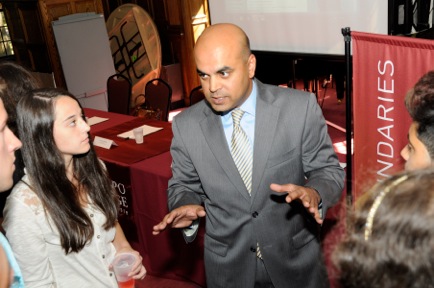
For the first time in three decades, the state Assembly convened a bipartisan committee on Tuesday with co-chairs from each party tasked with making recommendations on the design of ballots used in elections.
Committee co-chair Assemblyman Al Barlas (R-Essex) and Assemblyman Benie Wimberly (D-Passaic) opened the organizational meeting with remarks recognizing the historic occasion and work ahead.
Barlas:
“Integrity in our elections is of utmost importance to everyone, and that is evidenced by the fact that this is a truly bipartisan committee. In the history of the legislature, it’s very rare to have a committee of equal members. For the first time in a long time, we have a committee comprised of equal membership – six Republicans and six Democrats – all committed to ensuring we get this right,” he said.
The last time the Assembly had members from both parties chairing a committee was in 1992 when the Task Force on Auto Theft was created. Assemblyman Monroe Jay Lustbader, a Republican from Essex County, and Willie B. Brown, a Democrat from Essex County, were co-chairs.
The ballot design committee is co-chaired by Benjie Wimberly, a Democrat representing Bergen and Passaic counties.
“As co-chair, I will work with my colleagues on the select committee in a bipartisan manner and we will meet our obligation to serve and reflect our shared commitment to democratic values. I look forward to hearing from a wide range of advocates, experts, and concerned citizens as we gather information to make recommendations on our state’s ballot design,” Wimberly said in a statement released earlier this year.
On Monday, the full Assembly unanimously passed the resolution (AR167) establishing the committee and it convened its first hearing on Tuesday. The panel heard from experts on nationwide ballot design and county election officials to discuss New Jersey’s voting infrastructure.
“Ballot design is more than just the layout of the ballot, more than just blocks and columns and rows, landscape versus portrait. Technology and the capability of our existing election infrastructure is very important,” Barlas said. “Just because a court case related to primaries brought us here, does not mean we shouldn’t take a look at all of our elections. Certainly, fairness should apply to every election held in our state.”
Earlier this year, U.S. District Court Judge Zahid Quraishi ordered a new ballot structure for the 2024 Democratic Primary election. His ruling was upheld by a federal appeals court.
However, prior to the ruling, Speaker Craig Coughlin and Minority Leader John DiMaio called for “a public process on ballot design in New Jersey, including a thorough and thoughtful review of other states, as well as a process that involves input from the public.” They announced the creation of the bipartisan committee in a joint release on October 11.
“The Speaker and I have made it clear from the start that we will lead an open and transparent process. Strengthening the integrity of our elections deserves serious discussion, and we’re ready to give it the attention it deserves,” DiMaio (R-Warren) said.
The hearing in Trenton on Tuesday is the first of several public meetings. Other meetings are slated to be scheduled throughout New Jersey.
“We start here today on this process to get as much information as possible so that we can tackle these issues together and come to a bipartisan solution that is best for the voting public and our democracy,” Barlas said.
(Visited 31 times, 31 visits today)
Barlas, a leading design firm specializing in ballot design, recently hosted an important meeting for the Historic Ballot Design Committee in New Jersey. The meeting was held to discuss the upcoming election and to ensure that the ballots are designed in a way that is clear, accessible, and user-friendly for voters.
The Historic Ballot Design Committee is made up of a diverse group of experts in the fields of design, voting rights, and election administration. Their goal is to create a ballot design that is not only aesthetically pleasing but also functional and easy to understand for all voters, regardless of their background or level of education.
During the meeting at Barlas’ headquarters, committee members reviewed different ballot design options and discussed the best practices for ensuring that the ballots are inclusive and easy to navigate. They also discussed ways to incorporate new technologies, such as QR codes or interactive features, to make the voting process more efficient and accessible.
Barlas, known for their innovative and user-centric design approach, played a crucial role in facilitating the meeting and providing valuable insights into the latest trends in ballot design. The firm’s expertise in typography, color theory, and information hierarchy will be instrumental in creating a ballot that is both visually appealing and functional.
The committee members left the meeting feeling confident that they are on the right track to creating a ballot design that will make a positive impact on the upcoming election. By working together with Barlas and other design experts, they are committed to ensuring that every voter has a fair and equal opportunity to participate in the democratic process.
Overall, the meeting hosted by Barlas for the Historic Ballot Design Committee was a success, setting the stage for a collaborative effort to create a ballot design that will be both historic and impactful for voters in New Jersey. With their expertise and dedication to excellence, Barlas is poised to play a key role in shaping the future of ballot design in the state.

